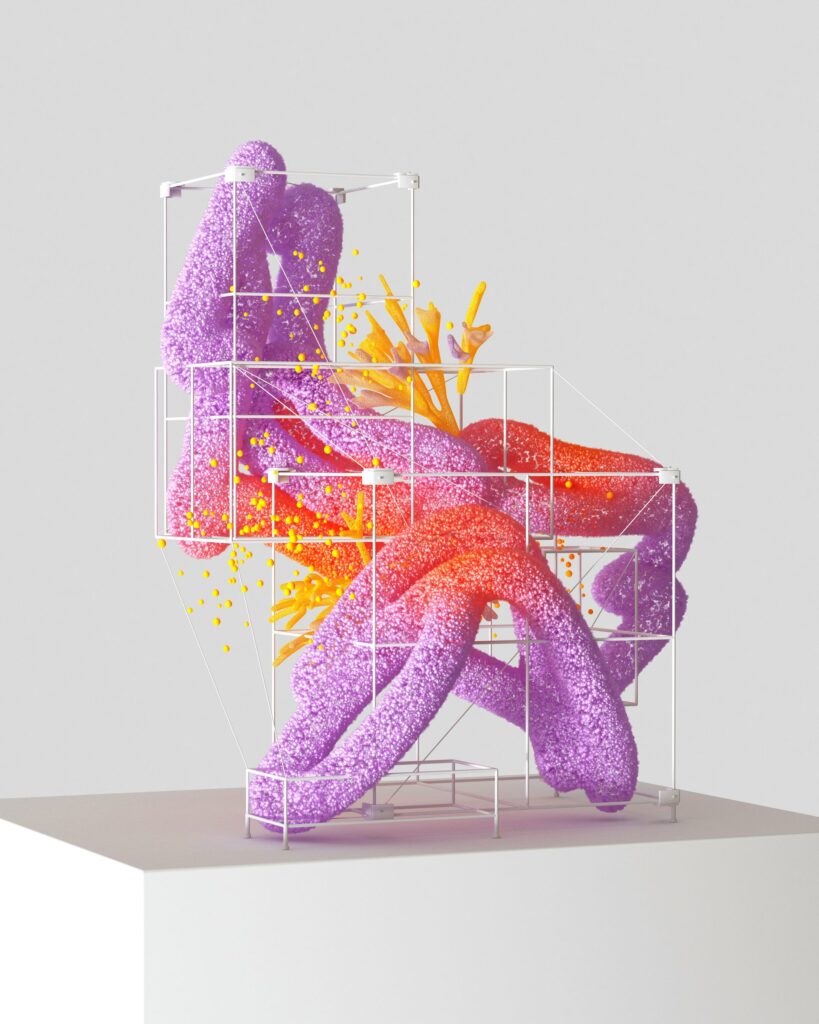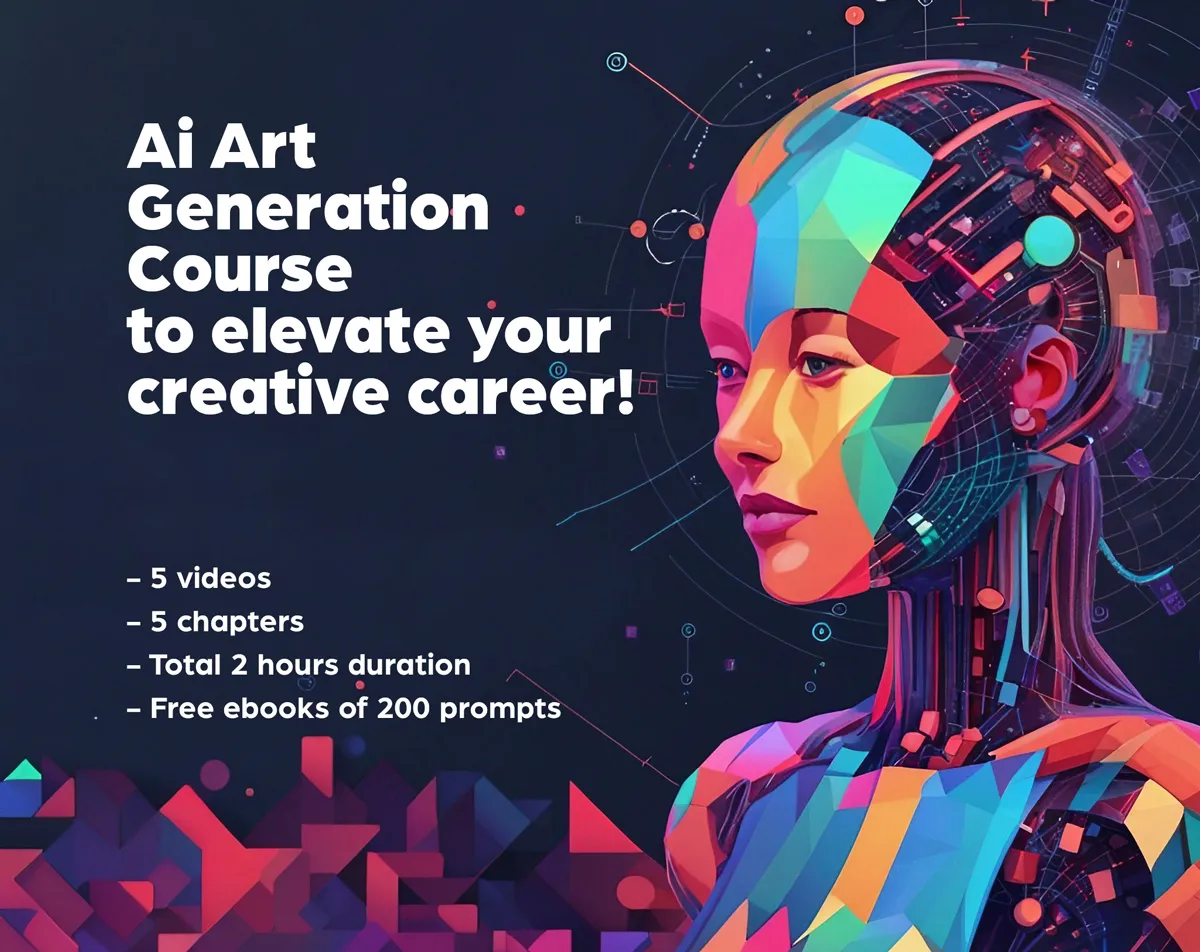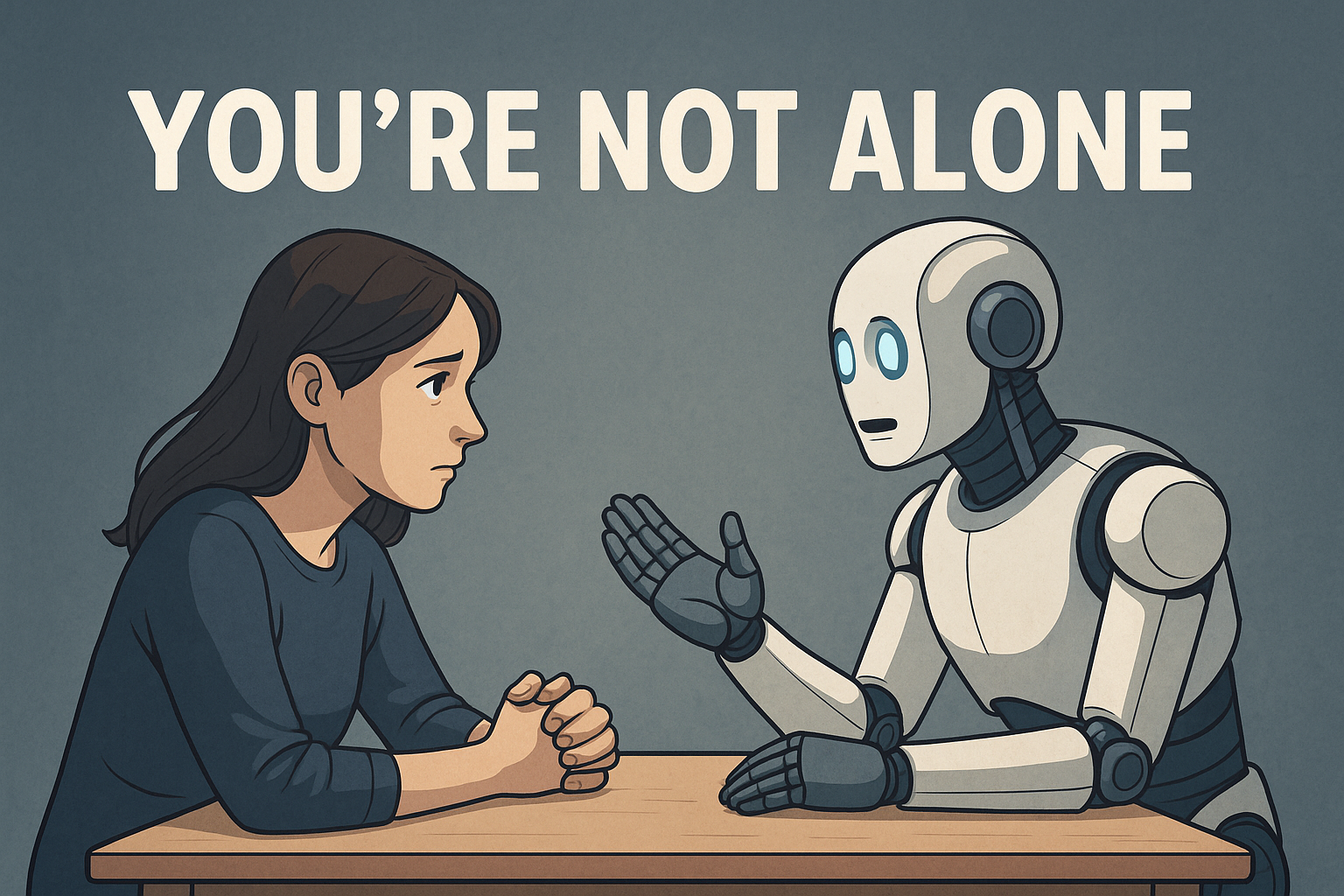Immerse yourself in the fascinating world of AI Art with the Free AI Art Course. This innovative course introduces you to the concept of Artificial Intelligence in art and explores the growing trend of free AI art courses. Whether you’re a beginner looking to explore your creativity or a professional seeking to enhance your skills, these courses offer valuable insights and practical knowledge. From maximizing your learning experience to building an impressive portfolio, this article provides essential tips and suggests supplemental resources to help you make the most of this exciting field. So grab your virtual paintbrushes and get ready to unleash your artistic potential in the realm of AI Art!
Introduce the concept of AI in art
Artificial intelligence (AI) has revolutionized various industries, and the field of art is no exception. AI in art refers to the use of artificial intelligence techniques and algorithms to create, manipulate, or enhance artistic creations. With the advancements in machine learning and deep learning algorithms, AI has gained the ability to analyze, understand, and generate art in ways that were previously unimaginable.
Explanation of AI in art
AI in art involves the use of algorithms and models that can process large amounts of data, learn from patterns and trends, and generate or enhance artistic content. These algorithms can analyze existing artworks, learn stylistic elements, and create new pieces that mimic the style of various artists or even generate completely unique and original artworks. AI can also be used to manipulate and enhance existing artworks, enabling artists to experiment and push the boundaries of their creativity.

Historical background of AI in art
The concept of AI in art dates back several decades. In the 1960s, computers were used to generate simple geometric patterns and shapes, creating a bridge between art and technology. As computer technology advanced, so did the possibilities in AI art. In the late 20th century, artists like Harold Cohen began experimenting with AI algorithms to create unique artworks. This marked the beginning of a new era in which AI was recognized as a tool for artistic expression.
Applications of AI in art
AI in art has a wide range of applications across various artistic mediums. One of the most common applications is the generation of AI-generated artworks that imitate the style of famous artists. These AI-generated pieces can recreate the brushstrokes, color choices, and overall aesthetic of renowned artists, allowing for the exploration of different artistic styles.
Additionally, AI can be used as a tool for collaboration between artists and machines. Artists can use AI algorithms to generate inspiring ideas, provide feedback on their work, or even create interactive installations that respond to the audience’s input. AI in art can also be utilized in the fields of music composition, film production, and virtual reality, enabling artists to push the boundaries of their creativity and express themselves in new and unique ways.

Highlight the growing trend of free AI art courses
Increasing popularity of AI art courses
In recent years, there has been a significant increase in the popularity of AI art courses. As artists and enthusiasts continue to recognize the potential of AI in art, the demand for education and training in this field has grown exponentially. AI art courses provide individuals with the knowledge and skills necessary to explore the possibilities of AI in their creative process.
Rise of free AI art courses
One notable trend in the AI art education landscape is the emergence of free AI art courses. These courses offer individuals the opportunity to learn about AI in art without any financial barriers. They are often offered by universities, organizations, or independent instructors who are passionate about spreading knowledge and fostering creativity in this field.
Advantages of free AI art courses
Free AI art courses offer various advantages to both beginners and professionals. Firstly, they provide an accessible entry point for individuals who may be interested in exploring AI in art but do not have the financial resources to invest in traditional education. Free AI art courses offer a wealth of knowledge and practical skills, allowing learners to build a solid foundation in AI art without any financial burden.
For professionals in the field of art, free AI art courses provide an opportunity to expand their skill set and explore new horizons. Whether they are painters, sculptors, or photographers, professionals can enhance their artistic practice by integrating AI tools and techniques into their workflow. Free AI art courses enable artists to stay relevant in a rapidly evolving digital landscape and unlock new creative possibilities.
Mention how these courses can benefit both beginners and professionals
Benefits for beginners in AI art
For beginners venturing into the world of AI in art, free AI art courses offer a structured learning path to acquire foundational knowledge. These courses often cover topics such as machine learning basics, computer vision, generative adversarial networks (GANs), and AI art applications. By starting with these courses, beginners can obtain a solid understanding of the fundamentals and gain confidence in exploring AI’s potential in their artistic practice.
Furthermore, free AI art courses provide beginners with hands-on experience through practical assignments and projects. These assignments allow learners to apply what they have learned and experiment with different AI techniques. By providing a supportive and guided learning environment, these courses empower beginners to unlock their creativity and explore new artistic possibilities.
Benefits for professionals in AI art
For professionals who already have experience in art, free AI art courses present an opportunity to expand their skill set and stay relevant in a rapidly evolving field. Professionals can learn advanced AI techniques, dive deeper into specific AI art applications, and gain insights into the cutting-edge technologies shaping the AI art landscape.
By integrating AI tools and techniques into their artistic practice, professionals in AI art can push the boundaries of their creativity, experiment with new styles, and create artworks that were previously unattainable. These courses also facilitate networking opportunities, allowing professionals to connect with like-minded individuals, collaborate on projects, and gain exposure to new perspectives and ideas.
Improving artistic skills through AI art courses
Regardless of their level of expertise, AI art courses can greatly enhance learners’ artistic skills. These courses foster a deeper understanding of composition, color theory, and visual storytelling. They encourage learners to think critically about their artistic choices and consider the impact of AI techniques on their work. By combining technical knowledge with artistic sensibilities, learners can create powerful and thought-provoking artworks that resonate with their audience.

Offer tips on how to maximize learning
Attending an AI art course is just the first step towards mastering AI in art. To maximize learning and make the most of these courses, consider the following tips:
Setting clear learning goals
Before starting an AI art course, take the time to set clear learning goals. Identify what you hope to achieve through the course and the specific skills or knowledge you wish to acquire. Setting clear goals will help you stay focused and motivated throughout the learning process.
Managing time effectively
Learning AI in art requires time and dedication. Create a study schedule that fits your lifestyle and commit to it. Consistency is key. Allocate dedicated time for studying, practicing, and completing course assignments. Avoid procrastination and strive to make consistent progress each day.
Active learning strategies
Engage actively with the course material by taking notes, asking questions, and participating in discussions. Actively applying the knowledge gained is crucial to understanding and retaining the concepts. Experiment with different AI techniques and algorithms, and explore how they can be integrated into your artistic practice.
Collaboration and networking opportunities
Take advantage of collaboration and networking opportunities offered by the course. Engage with fellow learners, participate in group projects, and join online communities related to AI in art. Collaboration and networking can offer new perspectives, foster creativity, and open doors to future collaborations or exhibition opportunities.
Practice and experimentation
To truly master AI in art, practice and experimentation are essential. Dedicate time to apply what you have learned in the course and experiment with different AI techniques. Embrace failure as an opportunity for growth and learn from mistakes. The more you practice and experiment, the more you will refine your skills and develop your unique artistic style.
Suggest supplemental resources
To further enhance your understanding and exploration of AI in art, consider exploring the following supplemental resources:
Recommended websites for AI art resources
- “Artificial Intelligence and Art” by the MIT Press: A comprehensive online resource that explores the intersection of AI and art, featuring articles, case studies, and interviews with AI artists.
- “Creative Applications” website: A platform dedicated to presenting projects, articles, and resources at the intersection of art, design, and technology. It showcases various AI art projects and provides insights into the latest trends and advancements.
Books on AI art
- “The Creativity Code: Art and Innovation in the Age of AI” by Marcus du Sautoy: This book delves into the relationship between art and AI, exploring the creative potential of machines and their impact on artistic expression.
- “Artificial Intelligence for Artists” by Nate Zelinsky: A practical guide that introduces AI techniques and tools specifically tailored for artists, offering step-by-step tutorials and hands-on projects.
Online communities and forums
- AI Art Discord Community: An online community of AI artists, researchers, and enthusiasts where you can engage in discussions, seek feedback on your work, and learn from experienced practitioners.
- Reddit r/AI_Artists: A subreddit dedicated to AI art, providing a platform for artists to share their work, ask questions, and exchange knowledge and ideas.
Artificial Intelligence tools and software
- Runway ML: A platform that allows artists to experiment with AI models and algorithms without writing complex code. It provides a user-friendly interface and a library of pre-trained models that can be easily integrated into artistic workflows.
- DeepArt.io: An online tool that applies AI algorithms to transform photos into artistic masterpieces. It allows users to experiment with various artistic styles and generate unique and visually striking images.

Provide advice on building a portfolio with AI art creations
Building a portfolio with AI art creations requires careful curation and presentation. Consider the following advice to showcase your AI art effectively:
Selecting the best pieces
Choose a selection of your AI art creations that demonstrate your skills, creativity, and versatility. Include pieces that showcase different techniques, styles, and subjects. Aim for a cohesive and visually engaging portfolio that leaves a lasting impression on viewers.
Displaying AI art in various formats
Present your AI art in different formats to cater to different platforms and audiences. Consider creating digital images, videos, or interactive installations. Experiment with augmented reality or virtual reality to provide an immersive experience for viewers. By diversifying the presentation of your AI art, you can reach a wider audience and engage them in unique and compelling ways.
Showcasing artistic growth and progression
Demonstrate your artistic growth and progression by including early AI art pieces alongside your latest works. Highlight the experimentation and evolution of your artistic style over time. This showcases your willingness to explore new techniques and your dedication to continuous improvement.
Utilizing social media and online platforms
Utilize social media platforms and online art communities to share your AI art creations with a wider audience. Platforms like Instagram, Twitter, and Behance allow you to reach art enthusiasts, potential clients, and fellow artists. Make sure to accompany your artwork with engaging captions and descriptions that provide insights into your creative process and artistic inspirations.
Importance of ethical considerations in AI art
As AI technology continues to advance, it is crucial to recognize and address ethical considerations in AI art. The following points highlight the importance of ethical considerations in AI art:
Understanding the impact of AI on creative expression
AI in art raises questions about the role of human creativity and the extent to which machines can replace or enhance it. Artists must critically examine the implications of relying on AI for creative expression and consider how AI can be used ethically and responsibly.
Addressing ethical concerns in AI-generated artwork
AI-generated artwork can raise concerns about authenticity, authorship, and cultural appropriation. Artists should approach AI-generated artwork with transparency, clearly acknowledging the involvement of AI algorithms in the creation process. Additionally, they should consider the ethical implications of using copyrighted materials or appropriating cultural symbols and imagery.
Promoting responsible and transparent AI art practices
Artists using AI in their work should strive to promote responsible and transparent AI art practices. This involves being transparent about the AI algorithms and techniques used, obtaining appropriate permissions for data and materials used, and respecting intellectual property rights. By adhering to responsible practices, artists can ensure that their AI art contributes to a positive and ethically conscious art ecosystem.

Discuss future possibilities and innovations in AI art
AI in art is a rapidly evolving field, and the future holds immense possibilities and innovations. The following points highlight some of the potential advancements in AI art:
Advancements in AI art technology
Advancements in AI technology will continue to shape the future of AI art. This includes improvements in image generation algorithms, enhanced natural language processing, and the integration of machine learning with other artistic mediums such as music, dance, and sculpture. As technology progresses, the boundaries between human and AI-generated artwork will blur, leading to new and exciting creative possibilities.
Emerging trends in AI-generated artwork
Emerging trends in AI-generated artwork include interactive installations, augmented reality (AR), and virtual reality (VR) experiences. Artists are increasingly exploring the potential of AI to create immersive and interactive artworks that engage the audience in new and transformative ways. Expect to see more AI-generated artworks that blur the lines between the physical and digital realms, creating captivating experiences.
Integration of AI in traditional art forms
AI in art is not limited to digital or new media art forms. Artists are starting to explore how AI can be integrated into traditional art practices such as painting, sculpture, and photography. AI can provide artists with new tools and techniques to augment their traditional artistic processes, leading to innovative and hybrid art forms. The integration of AI with traditional art forms will shape a new generation of artworks that push the boundaries of creativity and challenge established norms.
Explore potential career paths in AI art
The growing prominence of AI in art opens up various career paths for individuals passionate about both technology and creativity. The following career paths are worth considering:
Artificial Intelligence artist
Artificial Intelligence artists are at the forefront of AI art, using AI techniques and algorithms to create unique and original artworks. They employ the latest advancements in AI technology to push the boundaries of artistic expression and challenge traditional notions of art. Artificial Intelligence artists often work in close collaboration with engineers and data scientists to develop new AI art tools and techniques.
AI art researcher
AI art researchers explore the theoretical and practical aspects of AI in art. They conduct research to advance the field, develop new algorithms, and investigate the societal implications of AI in artistic practice. AI art researchers often publish papers, contribute to academic conferences, and collaborate with artists, computer scientists, and scholars from various disciplines.
AI art curator
AI art curators play a crucial role in the exhibition and promotion of AI art. They curate exhibitions that showcase AI-generated artworks, facilitate collaborations between artists and technologists, and engage with the public to foster a deeper understanding of AI in art. AI art curators often collaborate with galleries, museums, and cultural institutions to create immersive and thought-provoking experiences for visitors.
AI art instructor
As the demand for AI art education continues to grow, there is a need for knowledgeable and experienced instructors who can teach others about AI in art. AI art instructors design and deliver courses, workshops, and seminars to artists, students, and professionals interested in incorporating AI into their creative practice. They provide guidance, mentorship, and practical skills to empower learners to explore the potentials of AI in their artistic journey.
Conclusion
Free AI art courses have become an increasingly popular and accessible option for individuals interested in exploring the intersection of AI and art. These courses offer numerous benefits to both beginners and professionals, allowing them to enhance their artistic skills, expand their creative horizons, and stay at the forefront of a rapidly evolving field. By maximizing learning opportunities, utilizing supplemental resources, and considering ethical considerations, individuals can unlock the full potential of AI in their artistic practice. The future of AI art holds immense possibilities, and it is crucial to embrace continuous learning, experimentation, and responsible practices to shape a vibrant and ethically conscious AI art ecosystem. So, why not embark on the exciting journey of AI in art? Explore free AI art courses, unleash your creativity, and discover a world of endless artistic possibilities.


